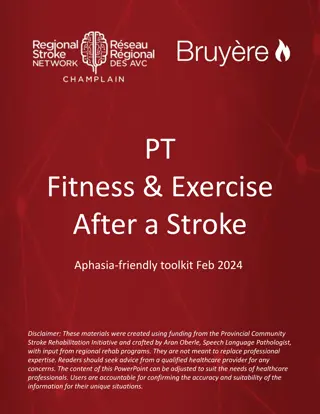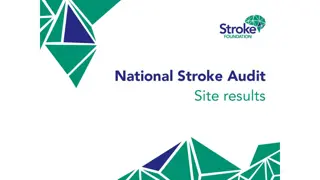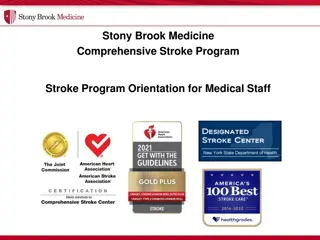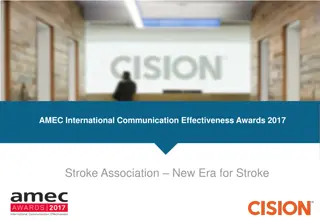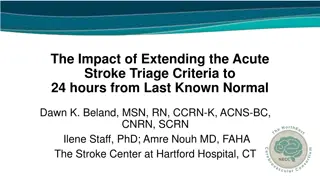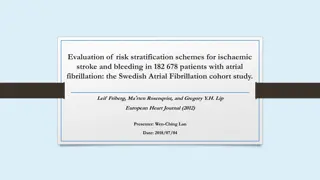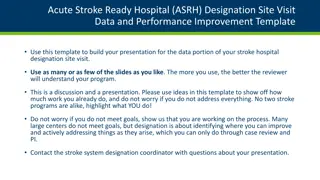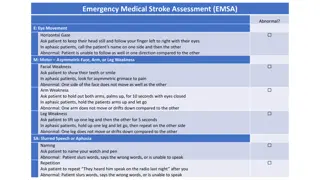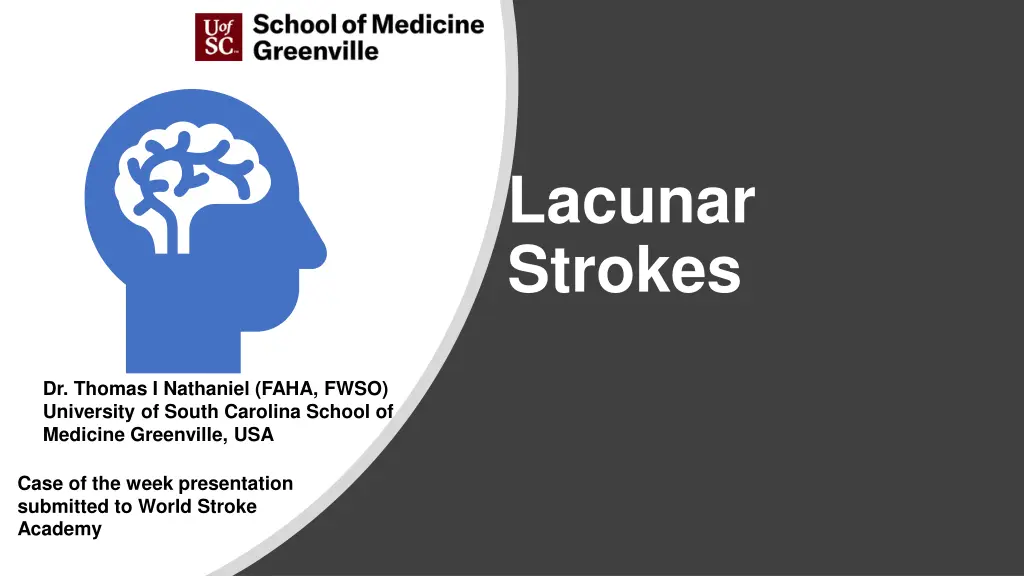
Understanding Lacunar Strokes and Infarcts
Explore the clinical symptoms, imaging features, and risk factors associated with lacunar strokes and infarcts. Learn to identify classic lacunar syndromes and understand the characteristics of lacunar infarcts caused by small vessel disease. Dive into a clinical case study and test your knowledge on recognizing lacunar stroke features.
Download Presentation

Please find below an Image/Link to download the presentation.
The content on the website is provided AS IS for your information and personal use only. It may not be sold, licensed, or shared on other websites without obtaining consent from the author. If you encounter any issues during the download, it is possible that the publisher has removed the file from their server.
You are allowed to download the files provided on this website for personal or commercial use, subject to the condition that they are used lawfully. All files are the property of their respective owners.
The content on the website is provided AS IS for your information and personal use only. It may not be sold, licensed, or shared on other websites without obtaining consent from the author.
E N D
Presentation Transcript
Lacunar Strokes Dr. Thomas I Nathaniel (FAHA, FWSO) University of South Carolina School of Medicine Greenville, USA Case of the week presentation submitted to World Stroke Academy
Learning objectives Learning objectives Learn to Identify clinical symptoms associated with lacunar strokes Identify imaging features of lacunar infarcts Identify risk factors for lacunar stroke
Classical symptoms of lacunar stroke are relatively specific to : pure motor stroke/hemiparesis, ataxic hemiparesis, dysarthria/clumsy hand, pure sensory stroke, and mixed sensorimotor stroke. Sometimes, cortical infarcts and intracranial hemorrhages can mimic a lacunar syndrome. Cortical symptoms (e.g., aphasia, neglect) and visual field defects are absent. Classic Classic lacunar lacunar syndromes syndromes
Clinical case Clinical case A 56 year old woman presents with sudden onset weakness of her left arm and leg and slurred speech o/e she is alert, speech is mildly dysarthric, there is weakness of the left face arm arm and leg. Visual fields, Language function and visuospatial function normal. Pulse regular 90 BP 155/90. ECG normal. Routine bloods normal
Question 1: Which clinical features does this lady have & does it fit a clinical lacunar syndrome? Clinical diagnosis A. Visual field defects B. Neglect C. Aphasia D. Pure motor deficit
Question 1: Which clinical features does this lady have & does it fit a clinical lacunar syndrome? A. Visual field defects B. Neglect Clinical diagnosis C. Aphasia D. Pure motor deficit Ans: D. Explanation: Classic lacunar syndromes include pure motor hemiparesis, ataxic hemiparesis, clumsy hand, dysarthria characterized by lesions either in the internal capsule or basis pontis and pure sensory loss caused by a lesion in thalamus. Cortical findings such as aphasia, neglect or visual field abnormalities are not classical symptoms of lacunar stroke.
Lacunar infarcts are small subcortical infarcts They are due to small vessel disease. There is progressive narrowing and finally blockage of the small thread-like arteries within cerebral tissue of the brain. This results in small subcortical infarcts which are less than 15 mm in diameter in the territory of the deep penetrating arteries. What are What are Lacunar Lacunar infarcts? infarcts?
MRI Axial Flair images of brain show multiple lacunar infarcts in bilateral peri ventricular white matter. Where are lacunar stroke Where are lacunar stroke found and how are they found and how are they formed? formed? The most frequently affected structures are: the basal nuclei internal capsule thalamus corona radiata and pons It is associated with abnormality in a single small deep perforating artery such as lenticulostriate artery. Occlusion of the perforating arteriole causes a lacunar ischemic stroke.
Question 2. In this lady with a pure motor stroke, which s the structure is the most likely to be affected? A. Internal capsule B. Spinal cord C. Primary motor area C. Frontal gyrus D. Temporal lobe Lesion location? Lesion location?
Question 2. In this lady with a pure motor stroke, which of the following is the structure most likely to be affected? A. Internal capsule B. Spinal cord C. Primary motor area C. Frontal gyrus D. Temporal lobe Ans: A. Explanation: The internal capsule is the only subcortical structure in the options. All others are cortical structures. Lesion location? Lesion location?
How do lacunar infarcts or strokes appear on How do lacunar infarcts or strokes appear on imaging? imaging? Larcunar infarct On MRI, an acute lacunar infarct appears as; hyperintense on diffusion-weighted imaging (DWI) hypointense on diffusion coefficient map. hyperintense on T2-weighted and fluid- attenuated inversion recovery (FLAIR), hypointense on T1 and hypoattenuated on CT. The shape could be rounded, ovoid or tubular Larcunar infarct White matter hyperdensity
A major cause of lacunar infarction is the blockage of a single small penetrating artery. Several different pathological processes can that result in cerebral small vessel disease. However, the risk factors for lacunar stroke are are similar to non-lacunar stroke: arterial hypertension, lipid disorders, smoking, diabetes mellitus and physical inactivity. Risk Factors Risk Factors
Question 3. Which of the following strategies will lower the risk of recurrence? Select all that apply A. Blood pressure lowering therpay B. Cholesterol lowering drugs C. Quitting Smoking D. Becoming more physically active E Antiplatelet drugs Long Long- -term prevention term prevention
Question 3. Which of the following strategies will lower the risk of recurrence? Select all that apply A. Blood pressure lowering therpay B. Cholesterol lowering drugs C. Quitting Smoking D. Becoming more physically active E Antiplatelet drugs Long Long- -term prevention term prevention
Quality of life following lacunar stroke depends on several factors, such as age and quick treatment following observation of symptoms. Some patients may may be left with persisting disability, and survivors of lacunar stroke are also at risk of developing cognitive impairment. Management of vascular risk factors, antiplatelet therapy, healthy diet and regular exercise can help reduce the risk.t Trials of new interventions for treatment and prevention of lacunar stroke are underwayt Long Long- -term outlook and outlook and reducing the reducing the risk of risk of recurrent recurrent lacunar stroke lacunar stroke term
References 1. Wardlaw JM, Smith EE, Biessels GJ, et al. Neuroimaging standards for research into small vessel disease and its contribution to ageing and neurodegeneration. Lancet Neurol 2013;12:822 38. doi:10.1016/S1474-4422(13)70124-8 2. Jackson C, Sudlow C. Are lacunar strokes really different? A systematic review of differences in risk factor profiles between lacunar and nonlacunar infarcts. Stroke 2005;36:891 901. doi:10.1161/01.STR.0000157949.34986.30 3. Jordan Gainey, Leanne Brechtel, Sarah Konklin, Lee Madeline, Lowther Ervin, Brice Blum, Thomas I Nathaniel (2018). In a stroke cohort with incident hypertension; are more women than men likely to be excluded from recombinant tissue-type Plasminogen Activator (rtPA)? Journal of the Neurological Sciences. 387,139-146. doi: 10.1016/j.jns.2018.02.016 4. Makin SD, Doubal FN, Dennis MS, et al. Clinically confirmed stroke with negative diffusion-weighted imaging magnetic resonance imaging: longitudinal study of clinical outcomes, stroke recurrence, and systematic review. Stroke 2015;46:3142 8. doi:10.1161/STROKEAHA.115.010665 5. Gainey J, Blum B, Bowie B, Cooley K, Madeline L, Ervin EL, Nathaniel, T.I. (2018). Stroke and dyslipidemia: clinical risk factors in the telestroke versus non-telestroke. Lipids Health Dis. 27;17(1), 2-10. doi: 10.1186/s12944-018-0870 6. Shuler R.Polk, Clay Stafford, Alyssa Adkins, Jessica Efird, Michael Colello, Thomas I. Nathaniel (2017). Contraindications with recombinant tissue plasminogen activator (rt-PA) in acute ischemic stroke population. Neurology, Psychiatry and Brain Research, 29, 6-11. https://doi.org/10.1016/j.npbr.2017.11.002 7. Potter GM, Marlborough FJ, Wardlaw JM. Wide variation in definition, detection, and description of lacunar lesions on imaging. Stroke 2011;42:359 66. doi:10.1161/STROKEAHA.110.594754 8. Group SPSS, Benavente OR, Coffey CS, et al. Blood-pressure targets in patients with recent lacunar stroke: the SPS3 randomised trial. Lancet 2013;382:507 15. doi:10.1016/S0140-6736(13)60852-1 9. Kimberly WT, Gilson A, Rost NS, et al. Silent ischemic infarcts are associated with hemorrhage burden in cerebral amyloid angiopathy. Neurology 2009;72:1230 5. doi:10.1212/01.wnl.0000345666.83318.03


